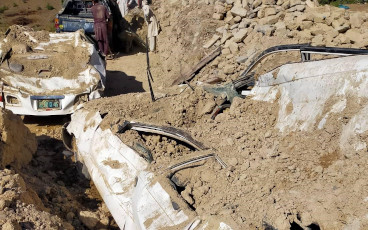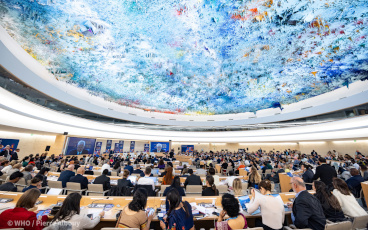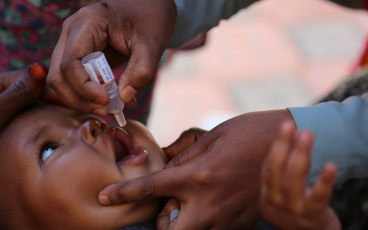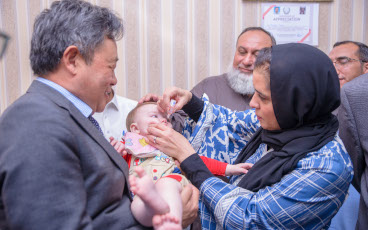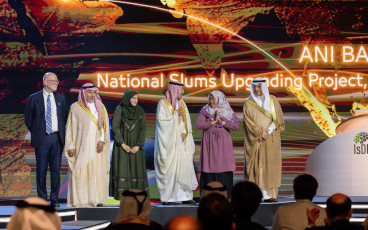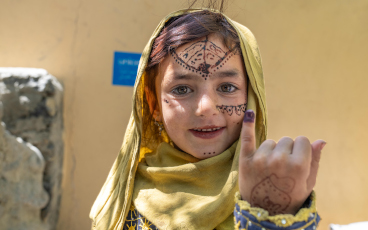Pakistan’s fight to end polio amid the climate crisis
21 November 2023
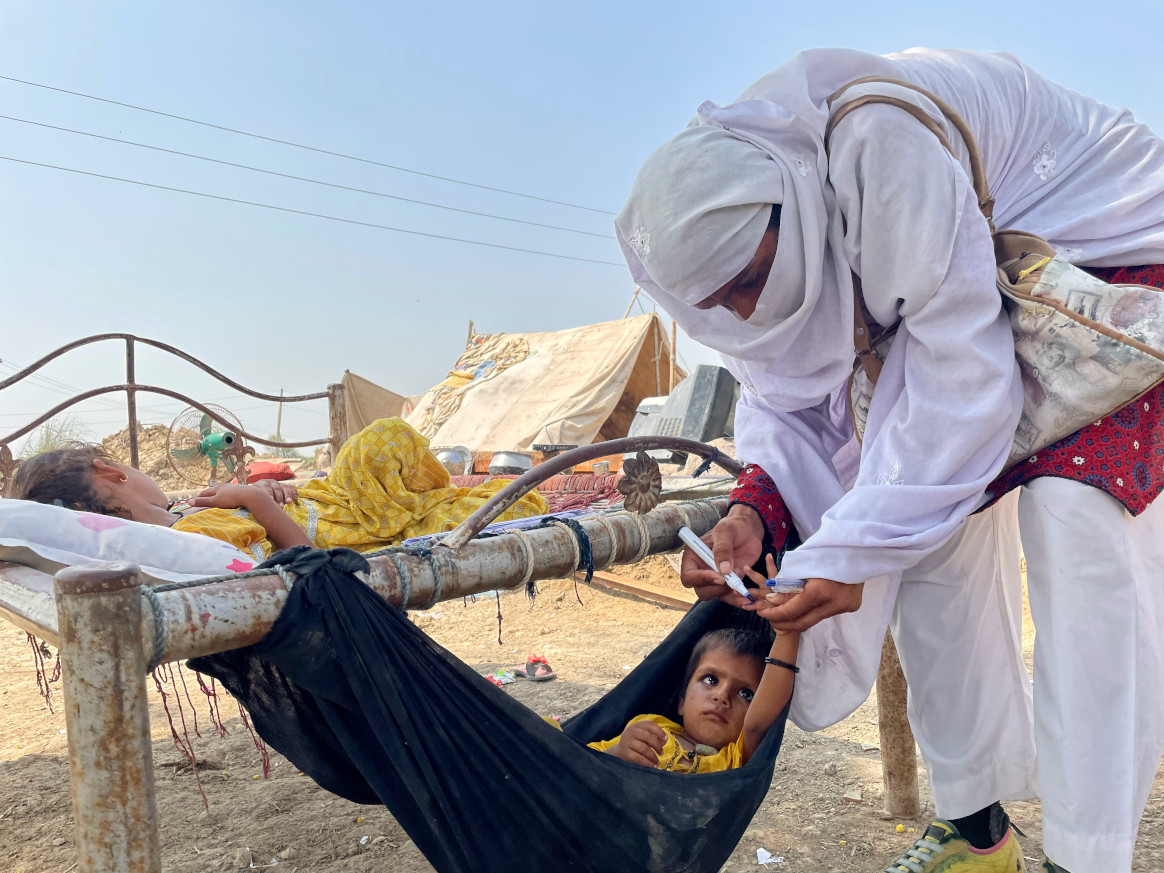
Pakistan, one of the last two endemic countries for wild polio, is closer than ever before to ending this devastating disease for good. However, many experts say Pakistan is among the countries most vulnerable to the climate crisis. As the world becomes hotter, more frequent and severe heatwaves, intense droughts, and devastating floods, threaten the incredible progress that has been made against polio.
Just last year, from May to October 2022, a historic heat wave was followed by heavy monsoon rains and melting Himalayan glaciers, causing the worst floods in Pakistan’s history—almost one-third of the country was under water at its peak. One in seven people in the country were affected by these floods and close to eight million people were displaced, including thousands of polio workers themselves.1
Critical infrastructure across the country was also damaged, from roads and bridges to health and sanitation systems. Such devastation following floods and storms leads to wastewater overflow, compromising safe drinking water and spreading pathogens like cholera and polio.2 This increases the risk of people encountering these life-threatening diseases while making it even harder to reach every child with the necessary vaccines to protect them.
In response to this climate emergency,3 the programme activated extreme weather contingency plans to resume immunization activities for polio and other vaccine-preventable diseases as soon as possible. This included adjusting campaign schedules and strategies, such as conducting vaccinations at health camps, at transit points, and in settlements for displaced persons. In some cases, this meant wading through deep water to reach children with life-saving vaccines. Despite the extraordinary circumstances, the programme managed to reach nearly 32 million children in the country during its August 2022 campaign.
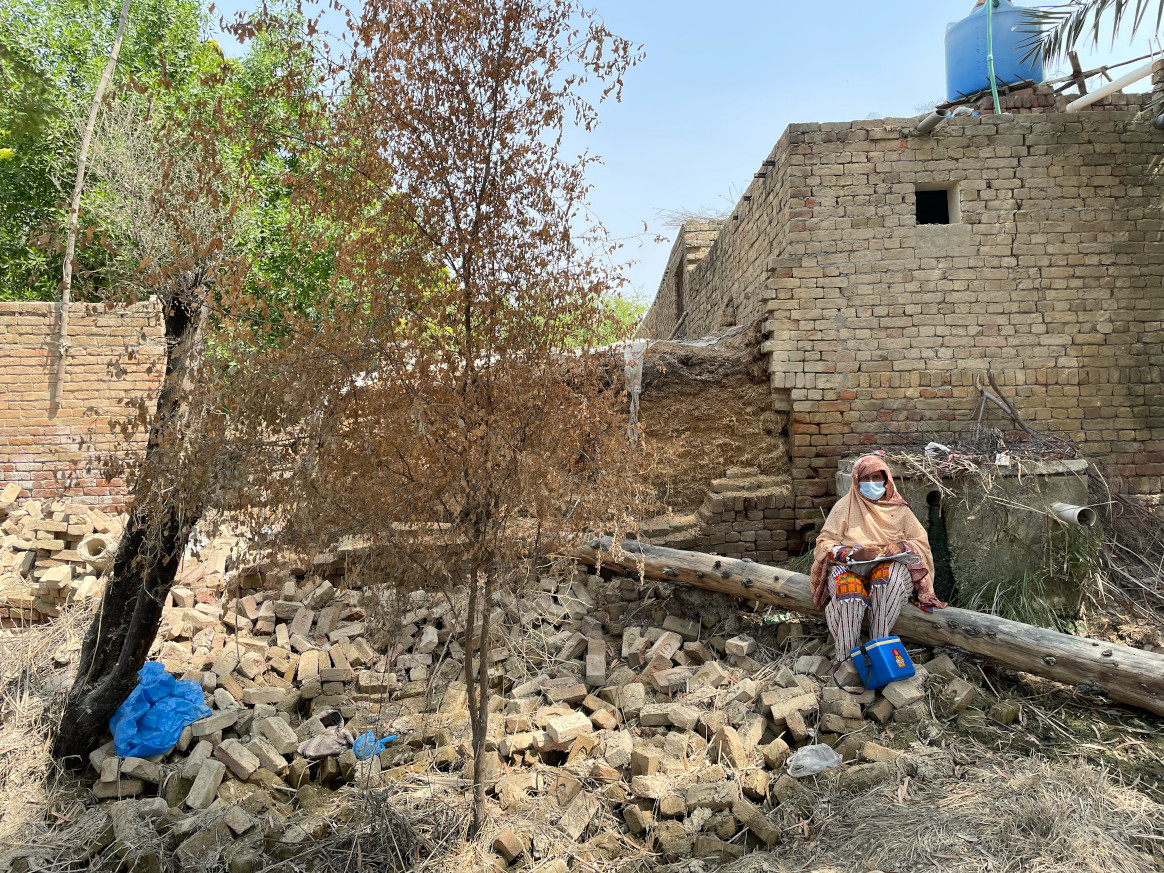
The GPEI also committed to supporting more than 12,500 polio workers across the country who were impacted by the floods.4 Nasreen Faiz, a team member who took part in polio campaigns following the floods, was among those affected. “One after the other, house after house was destroyed… My entire village was finished. The crops were gone, the homes were gone, the animals were dead,” she recounted. Shahida Saleem, another polio worker, evacuated her home for the floods and came back to find it severely damaged and her belongings under three-feet deep water.
The GPEI quickly secured funds to compensate those workers who suffered full or partial damage to their homes, like Nasreen and Shahida. As of April 2023, cheques worth Rs216 million (approximately US$752,000) had been distributed to 10,500 polio workers. While no amount of money can offset the loss and havoc from these devastating floods, the GPEI worked to support the workforce as much as possible.
Lastly, the programme drew on its long history of supporting humanitarian crises to help address the impacts of this climate emergency in the communities it serves. It helped establish critical health camps in flood-affected districts to provide basic health services, from the administration of routine immunizations and treatment of diseases to the distribution of water purification tablets and provision of nutrition services. To continue fighting polio and other infectious diseases, programme staff also actively conducted disease surveillance and collected and analysed data to help target outbreak response strategies in these high-risk settings.
Above all, working hand-in-hand with communities and local authorities, the polio programme was able to adapt its operations to ensure progress against polio in Pakistan was not lost and the polio workforce and affected communities were supported in the aftermath of this climate disaster. While the programme was able to successfully respond in this instance, it will face even more disruptions like this on the road to ending polio as the world becomes hotter. Learnings from its work in Pakistan following the floods will be essential to ensure that the fight against this devastating disease can continue amid future disruptions, and that its staff and communities are protected along the way.


